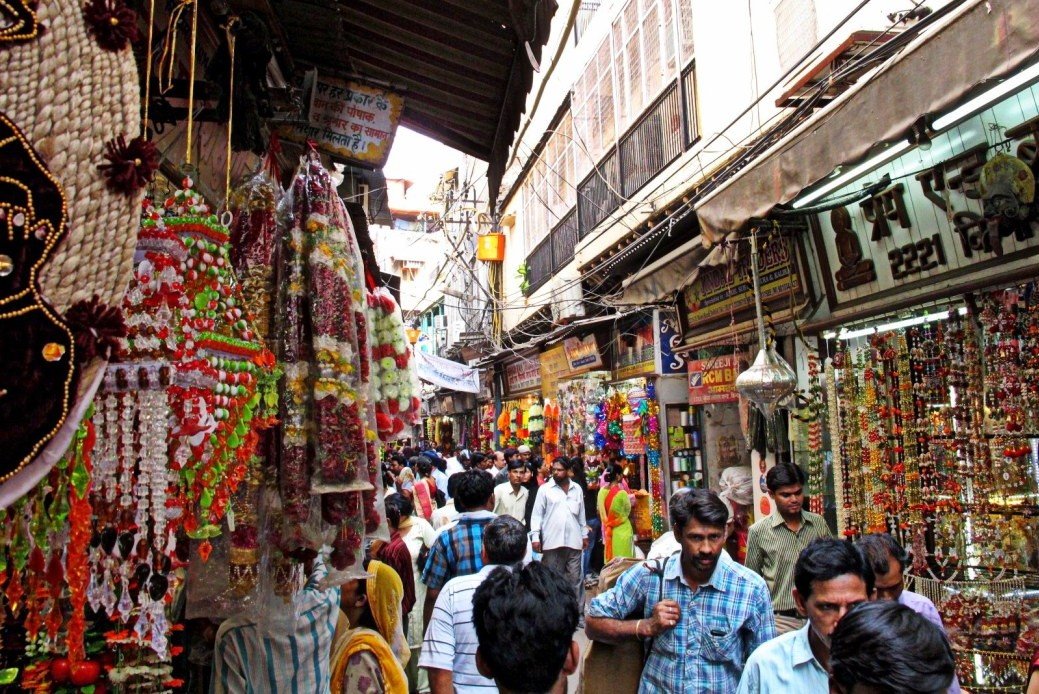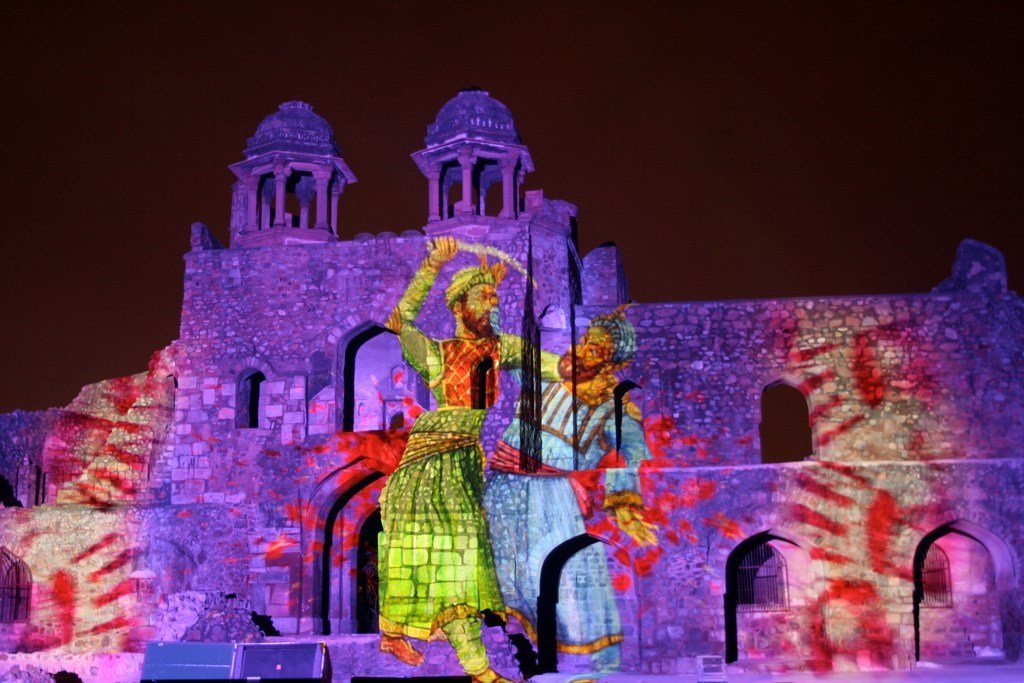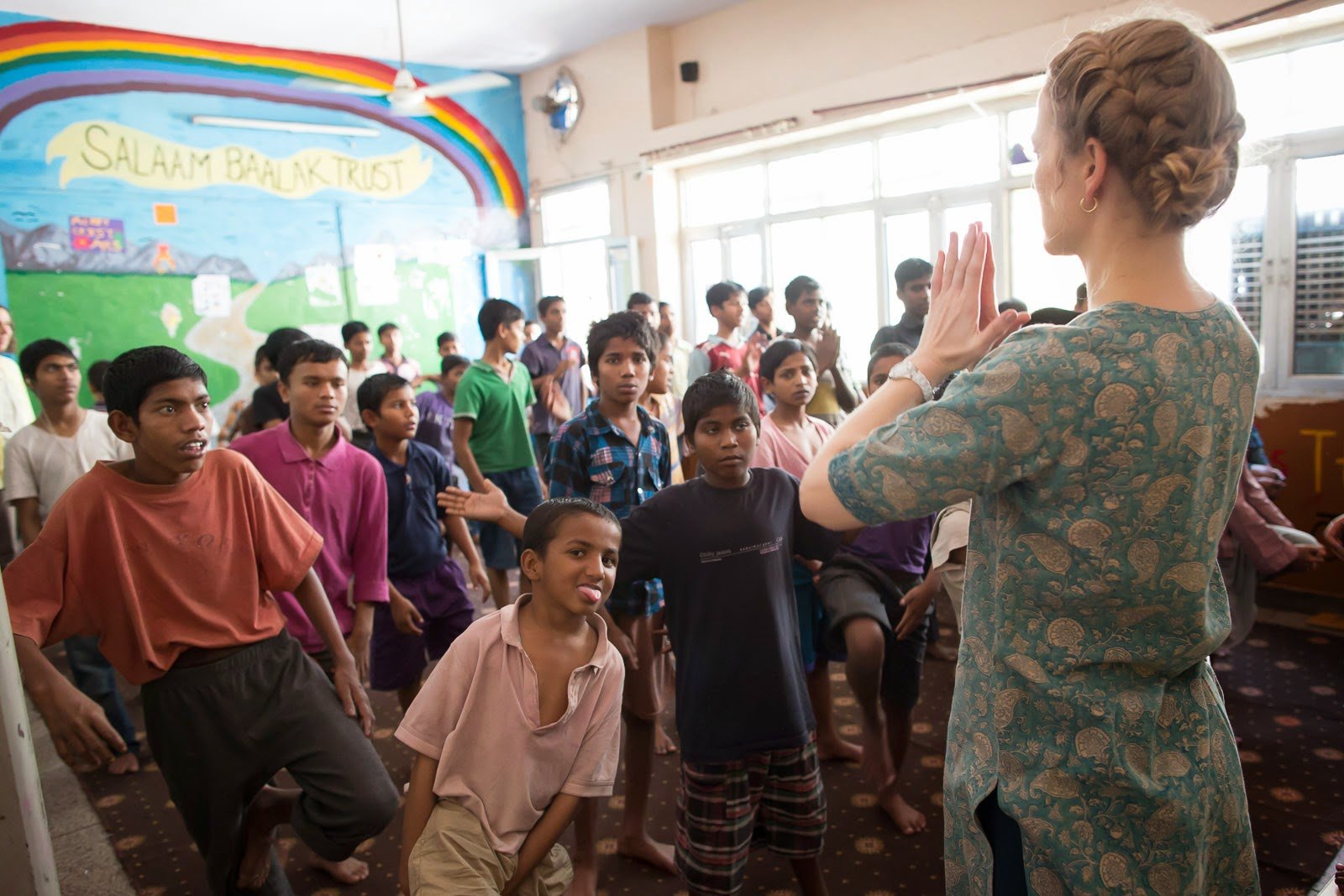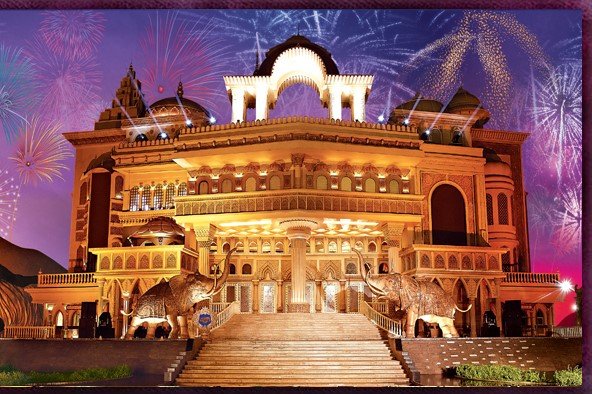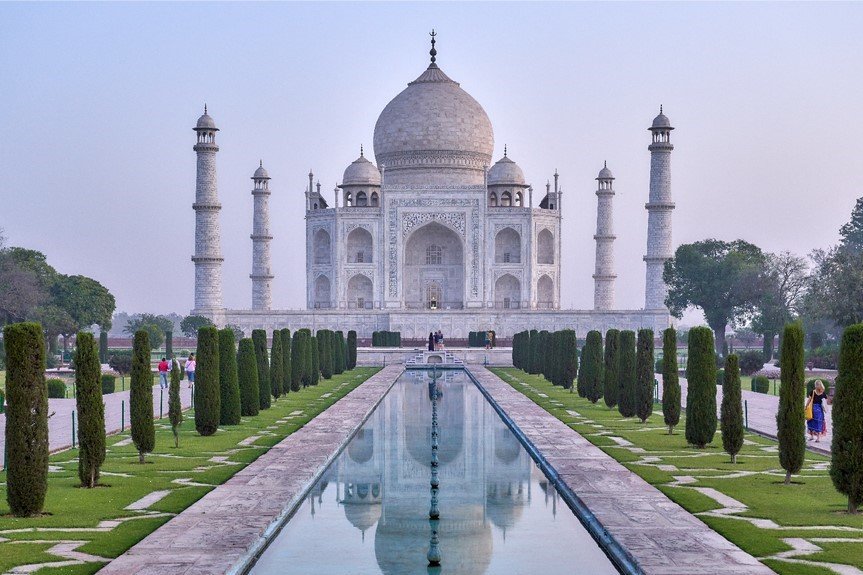
The city of the Taj Mahal, one of the seven wonders of the world, Agra in Uttar Pradesh is India's most popular tourist destination. Steeped in history, this ancient city is dotted with monuments, architectural wonders and beautifully landscaped gardens, which are remnants of the Mughal reign's majestic legacy. The city also enjoys a vibrant culinary scene while preserving its exquisite arts and crafts.
Situated on the banks of River Yamuna, the city, once the capital of the mighty Mughals, stands proudly today with a royal heritage that beckons to one and all. While visitors admire the grand structures here and weave through bustling chowks and bazaars, they can also check into luxurious hotels, shop at malls and plazas, and indulge in contemporary delicacies at upscale restaurants.
Agra finds a mention in the epic Mahabharata, where it is referred to as ‘Agraban’ or an integral part of the Braj Bhumi or the land of Lord Krishna. A lot of significant historical events in the city are said to have unfolded during the reign of Raja Badal Singh, a Sikarwar Rajput king, who is believed to have founded the city in 1475. However, it gained political prominence during the rule of Sikander Lodhi (1498-1517) of the Lodhi dynasty. It was given a new lease of life in 1526 AD, under the reign of Mughal emperor Babur. He was a patron of arts and wanted the inhabitants of the city to adopt the finer things in life. This resulted in the city being filled with skilled craftsmen, artists, statesmen, warriors and nobility. Thus began Agra’s golden age.
Babur’s legacy was carried forward by his progeny, emperors Akbar, Jahangir and Shah Jahan, all of whom added to the city’s grandeur in terms of wealth, patronage and incredible architectural marvels. Agra transformed into a hub of art, culture, learning and commerce. The city’s lip-smacking food, awe-inspiring monuments, and arts and crafts stand as relics of this illustrious antiquity. Its rich repertoire of arts and crafts has seeped into its modern personality too: Agra is a haven for crafts like marble and soft stone inlay work. It is said that Mughal empress, Nur Jahan, personally looked into the development of arts and handicrafts here. It is said that she was an expert in zari embroidery herself.
explore experiences
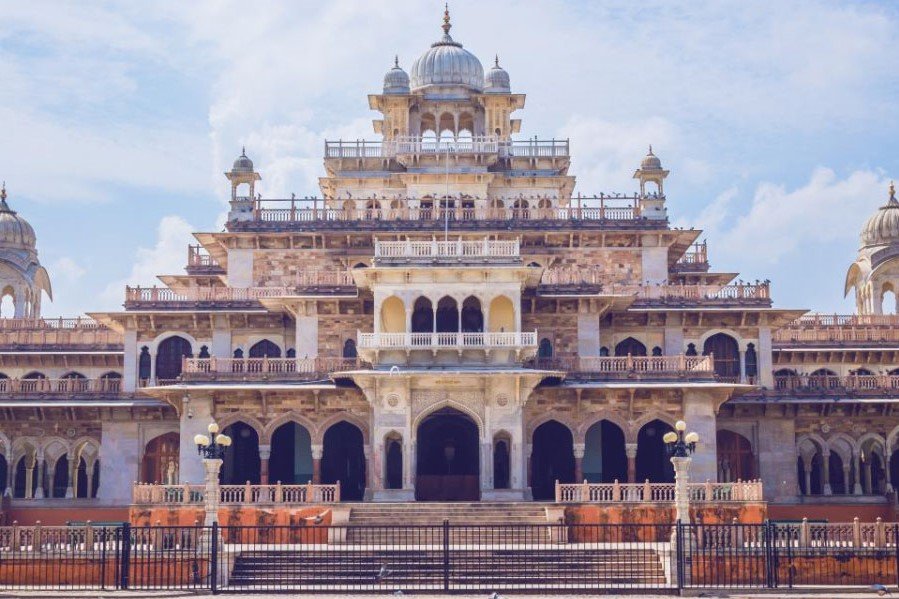
The city of palaces and forts, interspersed with historical monuments and gardens that testify the grandeur of the Rajput kings, Jaipur is the gateway to the royal heritage of India. Also called Pink City, the capital of Rajasthan, remains suspended in time, with its heritage preserved in the overwhelming Hawa Mahal that gazes down at the bustling streets of Johari Bazaar.
A little away from the city centre, which is resplendent with state-of-the-art cinemas/ movie theatres, eateries, multiplexes, museums and parks, lies the arid hilly country dotted with forts that earlier stood as armoured sentinels of Jaipur. The biggest and the most awe-inspiring is the Amber Fort, which leaves one humbled with its expansive fortifications and grandeur.
Founded by Maharaja Jai Singh II in 1727 AD, Jaipur was the stronghold of the Rajputs, who gave it its everlasting legacy in the form of various heritage sites, arts and crafts, culinary curations etc. Typical Rajasthani cuisine, comprising lal maas, dal-bati-churma, ker sangri and other uncountable recipes, all hold limelight in the culinary culture of India. These can be enjoyed in the quintessential Rajasthani style of sitting cross-legged on mats on the floor and digging in in the sumptuous thali, which features up to 20 dishes.
While one can enjoy the various offerings of the city as an outsider, what really sets Jaipur apart is its welcoming spirit that wins you over with its warmth. To symbolise this hospitable culture, the older part of the city was painted pink under the reign of Maharaja Ram Singh in 1876. Although this was done during the British rule when the Prince of Wales came to visit India, many houses are still adorned with the hue to reiterate their signature slogan of 'Padharo Mhare Desh' (Welcome to my Land).
Jaipur was designed by architect Vidyadhar Bhattacharya in the early 18th century. Through the years it has transformed into a bustling metropolis while continuing to retain its old-world charm. Following India's independence from British rule, Jaipur and the principalities of Bikaner, Jaisalmer and Jodhpur came together to form the present state of Rajasthan. Today, thousands of travellers from the world over come to explore its vibrant streets every year, sampling its delicious food and experiencing its rich cultural flavours. They find at every turn a charming confluence of tradition and modernity, old shops rubbing shoulders with new malls without ever detracting from the city's essence.
A kaleidoscope of many moods and hues, Jaipur is also a fantastic shopping destination. From colourful puppets and bandhni sarees to silver jewellery and lac bangles, it offers a host of knick-knacks and souvenirs to take home along with many fond memories!
explore experiences
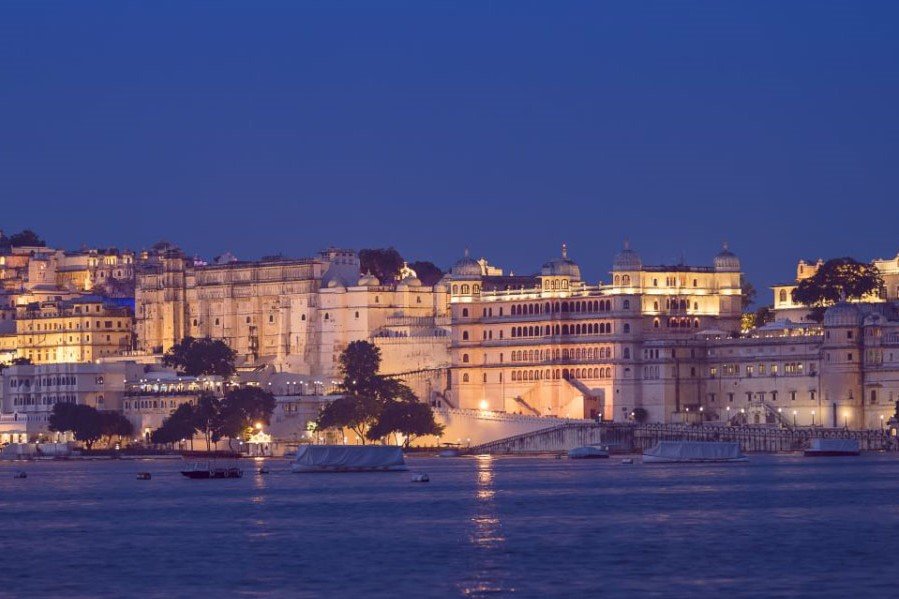
Popularly known as the City of Lakes, serene Udaipur is the crowning jewel of royal Rajasthan. With shimmering lakes visible from almost every rooftop, fairytale palaces, sprawling havelis, revered temples and narrow lanes weaving through colourful markets as ancient as the city's history, Udaipur's charm is unmatched.Founded by Maharaja Udai Singh II in 1559, the city served as the capital of the kingdom of Mewar after Mughal emperor Akbar besieged its earlier power-centre Chittorgarh. Udaipur is also referred to as the Venice of the East, a title it has earned for being dotted with numerous lakes (seven to be precise)! Nestled in the mighty Aravalli range, surrounded by dense forests and craggy hills, and magical sunrises and sunsets turning its lakes into pools of gold, Udaipur is one of the most picturesque destinations in the country. Colonel James Tod of the East India Company, who was also a scholar, aptly described the city as “the most romantic place in the Indian sub continent”.
Visitors can enjoy tranquil boating on Lake Pichola, the largest of Udaipur's lakes, spend a day taking in the jaw-dropping opulence of City Palace, visit the time-weathered temples, shop at the art and curio stalls that line the streets, enjoy Rajasthani folk music and dance performances, taste mouth-watering cuisine or drive out of the city to discover legends hidden in the wooded Aravalli hills and the impregnable forts dotting its surroundings. No wonder then, Udaipur is one of the most popular tourist destinations in the country!
explore experiences
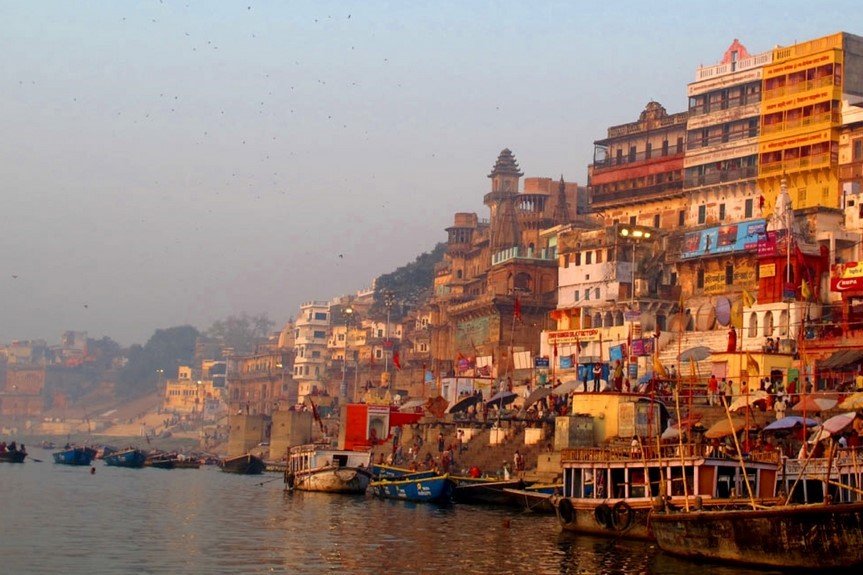
One of the oldest living inhabitations of the world, the sacred city of Varanasi or Benaras, nestled on the banks of the holy Ganges river, has been attracting pilgrims for centuries. Celebrated author Mark Twain, who visited India in the last decade of the 19th century, described the city as “older than history, older than tradition, older even than legend.”
Believed to be the abode of Lord Shiva, Varanasi is among the seven sacred cities in the country. Centuries of history, art and tradition have conflated to add colourful layers to Varanasi's aura, which is most spectacularly evident at its ghats (stepped banks of a river). An abode of travellers in search of holiness and divine providence, the ghats of the Ganges are the highlight of the spiritual scene of Varanasi. From the famous Ganga arti (a fire ritual) to cremation ceremonies, the ghats are the site of time-honoured rituals that are performed to this day.
Legend has it that Lord Shiva channelled the celestial Ganga on earth, and that is why the river is considered holy. Thousands of devotees from all over the country come to bathe in its waters as it is believed that taking a dip in the holy Ganges absolves one of their sins. It is also believed that those cremated here achieve moksha (salvation). For many, the sacred Kashi Yatra (pilgrimage to Kashi, as Varanasi was earlier called) is one of the most important rituals to undertake during their lifetime.
In recent years, the city has turned into a purveyor of philosophy, yoga, the ancient medicinal science of Ayurveda, and astrology.
Varanasi is also one of the holiest sites of Buddhism, as it was in Sarnath, which is located merely 12 km away, that Lord Buddha preached his first sermon. Jain literature, too, refers to Kashi as a holy city, as it is the birthplace of four Jain tirthankaras (saints). It is said that Kabir, a 15th-century mystic poet and saint, was also born in this city.
The city, believed to date back to 1400 BC, finds mention in the Upanishads (holy Hindu scriptures) as Benaras and is said to have been an important centre of trade and education. It eventually acquired the name Varanasi and came to occupy a special place in the Indian consciousness, especially as a bridge to the old world. Scribes have, for long, tried to capture the essence of Varanasi in books. From the couplets of Kabir to the works of prose writers like DN Khatri, Hazari Dwivedi and Jaishankar Prasad, the city has inspired a vast body of literary, scriptural, poetic and historical works produced by some of the most famous Indian writers over centuries. Famous for silk weaving, the city offers brocade sarees that are a must in most Indian brides' trousseau. The city is also famous for copper ware, brassware, wooden and clay toys, and jewellery.
Famous melody-makers, from Mughal court musicians to present-day personages like iconic sitar player Ravi Shankar, shehnai maestro Bismillah Khan and late vocalist Girija Devi have called Varanasi home. Their influence on classical and contemporary music is so strong that Varanasi also features among the ‘Cities of Music’, which has been established by UNESCO’s Creative Cities Network.
explore experiences


